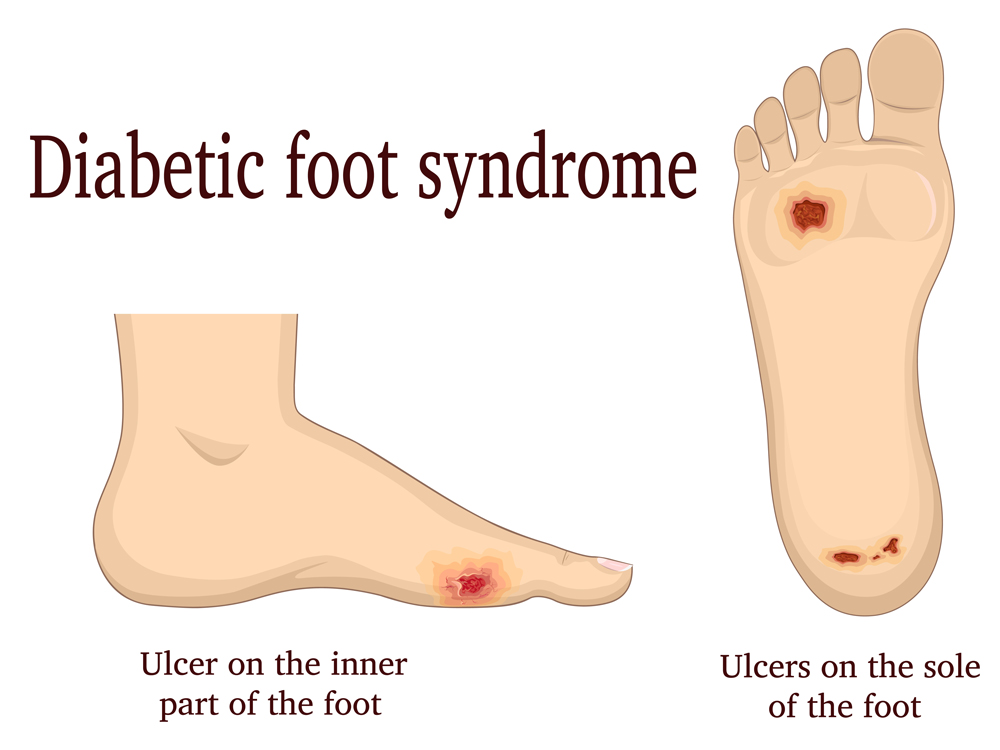Prevent Diabetes Wounds with These Simple Ways
Diabetes and elevated blood sugar levels can cause a range of health complications. Among these, slow-healing sores and ulcers are most common, posing a risk of infection. Therefore, it is important to learn how to prevent diabetes wounds.
Ongoing diabetes care is crucial for addressing these concerns, including wound avoidance. Seeking diabetes care with podiatry services and wound care can diminish infection risks and potential severe complications. Regular foot and blood sugar level check-ups by medical specialists can help greatly in preventing further complications and issues.

Prevent Diabetes Wounds
Proactive approach to diabetes management, regular monitoring, and preventive measures, is crucial in preventing diabetes wounds and minimizing the risk of complications.
The success of diabetes management varies depending on several factors, including commitment to the treatment plan, lifestyle factors, and the progression of the disease itself. Below is some of the main points regarding the success of diabetes management and preventing wounds.
Diabetes diet
Optimal diabetes diet plays a crucial role in regulating blood sugar levels in diabetes management and preventing wounds. Educating on dietary choices is key to diabetes care. Your doctor may recommend that you work with a nutrition dietician if you are obese and need to lose weight.
Embrace a diet low in sugars, saturated fats, and everything that can increase your blood sugar levels. While complete avoidance of such foods may be difficult, moderation offers a feasible approach.
Try to stay away from fast food altogether or choose healthier options if you want to manage your diabetes symptoms properly and prevent wounds. Common culprits include cookies, cakes, ice cream, butter, and processed or fried foods. Opting for homemade meals helps to control over ingredients. Scrutinizing food labels aids in mitigating diabetes wound risks.
Foot care
Foot problems is very common. Seek medical advice if you are prone to feet problems.
Great foot care can help to prevent sores and ulcers, and all types of diabetes wounds, which predominantly affect the feet, making preventive measures very important. Consistent foot examination for blisters, scratches, cuts, and ingrown toenails is crucial.
Avoid using a heating pad, hot water bottle, or electric blanket anywhere close to your feet. Similarly, refrain from positioning your feet close to heaters or a fireplace, as it’s possible to sustain burns without realizing it.
Use suggested moisturizers to maintain the softness and moisture of your feet’s skin. This can help to prevent the formation of dry skin cracks and reduces the likelihood of diabetes wound infection.
Refrain from applying lotion between the toes, instead keep them dry and clean. Exercise caution when using over-the-counter medications purchased from the drugstore. Avoid using medicated patches on corns or warts.
Avoid infection
Adhering to clean, dry socks and well-fitting shoes, while eschewing barefoot walking or open sandals, minimizes foot exposure to potential harm and infection. Daily foot cleansing with warm water and thorough drying further bolsters protection and prevention of infectious diabetes wounds.
Do not attempt to treat calluses or corns on your own and avoid using sharp instruments or chemicals for their treatment. Seek immediate medical advice and treatment from your doctor or a podiatrist if you notice any abnormalities or concerns with your feet and prevent diabetes wound complications.
Once you notice an ulcer, managing it in people with diabetes is crucial to reduce infection and the risk of amputation, and reducing healthcare costs.
Manage stress
You may be surprised, but there are indications that stressful situations can impact diabetes, potentially influencing both its development and its worsening.
Adverse childhood experiences and especially events during the initial two years of a child’s life could increase the likelihood of them developing type 1 diabetes. Additionally, factors like chaotic family environments and behavioral issues were linked to this risk. Other studies have also backed the idea that stressful experiences might elevate the chances of developing either type 1 or type 2 diabetes.
Psychological and physical stress might trigger the onset of Type 2 diabetes. Stress comes in two forms: acute and chronic. While both can lead to various side effects, chronic stress can particularly have detrimental long-term impacts on health.
Stress exacerbates health issues by disrupting insulin functionality, elevating blood sugar levels. Compounded by concerns over dietary habits, blood sugar monitoring, insulin administration, and complications, stress management also becomes crucial for diabetes management and preventing wounds.
Combat stress through exercise, adequate sleep, relaxation, and seeking emotional support from friends, family, or professionals. Stress reduction fosters stable blood sugar levels, slowing down and preventing diabetic wound progression.
Comprehensive diabetes education includes blood sugar regulation, wound care, dietary management, stress reduction, and emotional support.
This article contains informational and educational materials and does not replace health or medical advice. For questions or concerns regarding your medical condition or health objectives, speak to a qualified physician or healthcare provider.






Leave A Comment